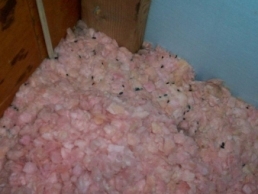How to Identify Mouse Poop & Mouse Droppings
When mouse infestations are present in the home so, too, are mouse droppings. In fact, the rodents’ feces is often spotted before individuals encounter any adult mice. Mouse droppings can be harmful, or even deadly, when inhaled or consumed as the rodents are known to carry various diseases.
What Do Mouse Droppings Look Like?
They usually measure less than 1/4 of an inch in length and are found in areas near food, like kitchen cabinets and drawers, as well as along pathways the rodents consistently travel, such as alongside walls and under the cover of furniture. Collections of fecal matter are generally composed of a few separate pellets, which are pointed at the ends. Some experts liken mice droppings to grains of rice in terms of shape.

Cleanup & Removal
Proper sanitation is essential wherever mouse feces is found. The droppings can transmit a variety of diseases including hantavirus, salmonella, and lymphocytic chorio-meningitis (LCM). Safe removal of rodent fecal matter involves the use of masks and gloves to prevent contact, and infested buildings should be aired out after being sanitized to prevent respiratory infection. The only way to ensure safe and complete removal of the base problem is to employ professional wildlife control specialists to treat for the mouse infestation.
Learn more about mouse removal.
Get them out.
Keep them out.®
Experiencing a wildlife or pest issue? We can help! Complete this form and your local Critter Control® office will contact you to assist.
- Baby Mice
- Dead Mice
- House Mouse Nest
- How to Get Rid of Mice
- Mice Behavior in the Winter
- Fear of Mice
- How to Catch a Mouse
- Life Cycle of a Mouse
- Mice in Attic Removal
- Mice in Crawl Space
- Mice in the House
- Mice in the Walls
- Mice in Yard
- Mice Problems
- Mice in Pantry
- Mouse Noises
- Mouse Repellent
- Mouse Tracks
- Mouse Traps & Bait
- Mice vs. Rats
- Types of Mice
- Diseases That Mice Carry
- Mouse Appearance
- Where Do Mice Hide?
- White Footed Mouse Habitat